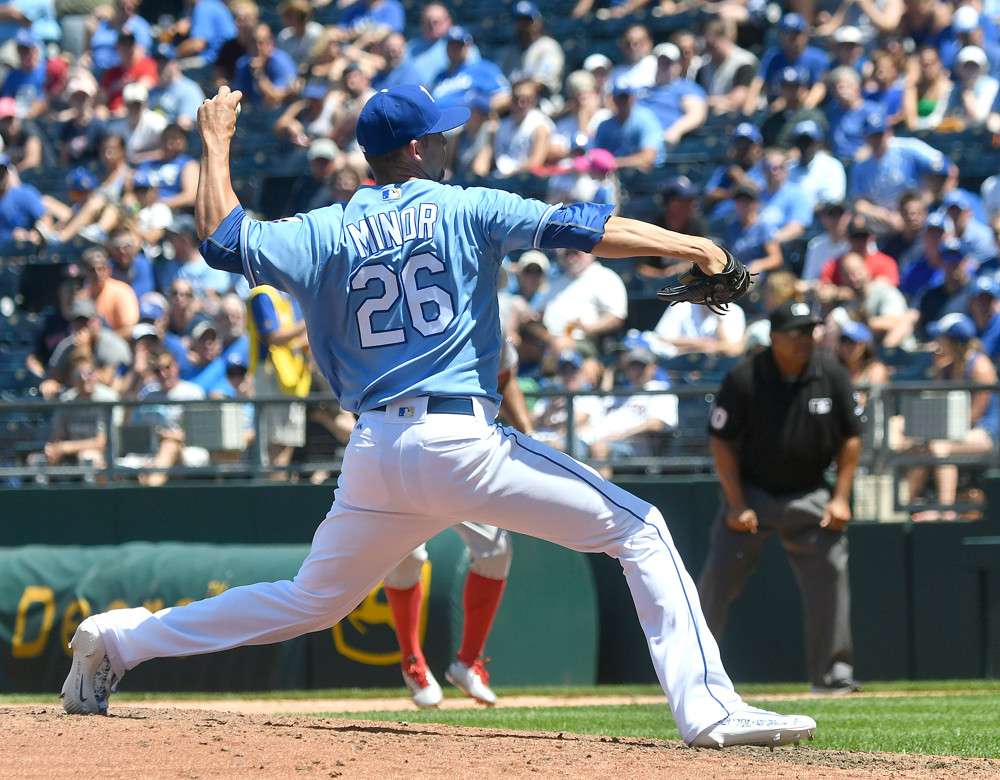
The Texas Rangers added to their pitching staff by signing Mike Minor after just adding Doug Fister about a week ago. The Rangers are in desperate need of rotation help, and they hope the 29-year-old lefty can fill one of those spots. The plan is suspect, though, because Minor hasn’t started a major league game since 2014 after struggling to come back from shoulder surgery.
While Minor may or may not start, he threw lights out as a reliever for the Royals and closed at the end of the season, notching six saves. In 77 innings, he posted a 2.55 ERA with a 10.2 K/9 and a 2.6 BB/9. So if he stays healthy, his floor is a lockdown late-inning reliever. Additionally, he threw two or more innings 10 times last year, so he could be also used as a multi-inning fireman.
The key to Minor’s value will be whether he can effectively start. There is no way to accurately know his starting talent, but here is what we know from when he did start (2012 to 2014):
- His ERA was 3.99. Since 2014, the league-wide ERA has risen 0.72.
- His HR/9 was 1.2 HR/9. Since then, the HR/9 has gone up 0.41.
- His starter velocity sat at 90.3 mph but jumped to 94.4 mph relieving this past year.
- He averaged 6.1 IP per start with the league average dropping from 6.0 IP to 5.5 IP over the time frame.
It’s time to start working on the “ifs” and “buts.” If the league changes affect his steady starter performance, like it did the rest of the league, Minor is a 4.70-ERA starter with major home run issues, especially in Texas’ home run happy home park.
Minor’s velocity may be higher than his previous ~90 mph starter velocity. Normally, pitchers normally lose one mph when moving from relieving to starting. The long layoff, excellent rehab, and cleaned up shoulder could mean a new higher starter velocity. His velocity may level off at a higher level than the pre-injury levels and make up for the league-wide changes. Owners need to monitor his starting velocity in Spring Training to help adjust his expected talent level.
Another concern is how much the Rangers will allow him to throw. Starters are throwing fewer and fewer innings. Minor has the additional red flags of struggles coming back from shoulder surgery and not having started since 2014. It’s tough to see the Rangers pushing his innings even close to 150, which would mean about 27 starts.
If Minor does transition from reliever to starter, pitch mix won’t be an issue. He threw four above-average pitches last season (fastball, change, slider, curve), with each pitch posting over a 10% swinging strike rate.
If drafting today, I’d hedge my bets that Minor is an elite reliever with a good chance of closing. Little information points to him being a decent major league starter. The one item to keep an eye on is Spring Training starting velocity. Even if he’s good enough to start, he could operate in a swing role, like Mike and Jordan Montgomery, to limit his innings. Buy 2017 and hope for more.
